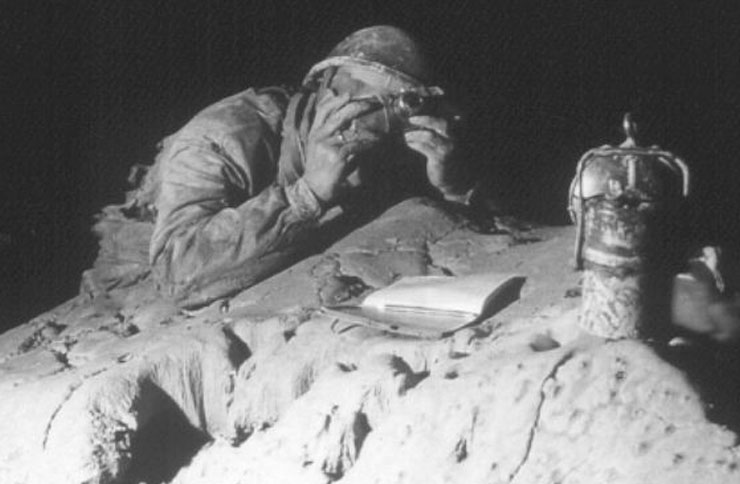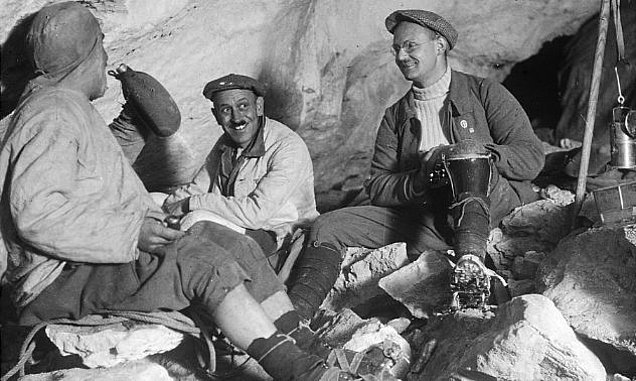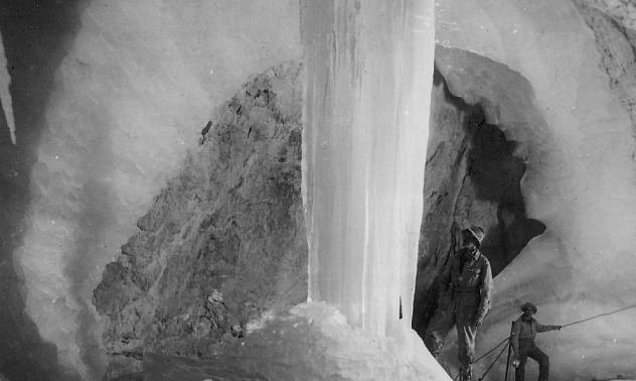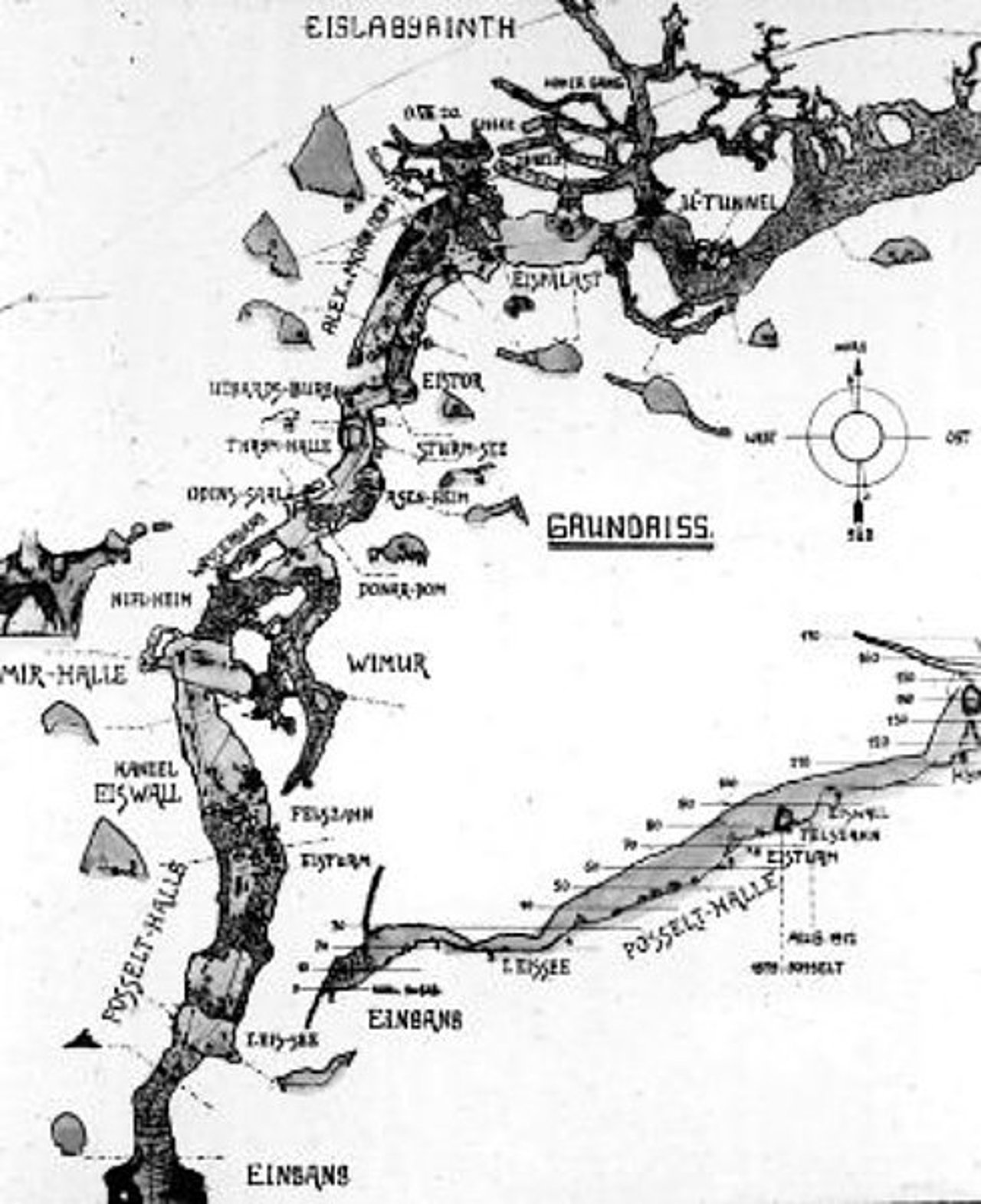
Exploring the Largest Ice Cave in the World
The foundation for the Eisriesenwelt becoming a popular tourist destination was laid when the Salzburg naturalist Anton von Posselt discovered it in 1879. At that time, he had managed to explore the first 200 metres of the ice cave. Due to too steep ice cover and insufficient equipment, he had to turn back. The "Posselt-Kreuz" is located at this point.
Weil das Höhlenportal vom Tal aus nicht zu erkennen war, ist die Höhle danach für längere Zeit in Vergessenheit geraten. Das sollte sich im Jahr 1912 ändern.


1912: Cave expedition
(Alexander Mörk)
Inspired by Anton Posselt's report, Alexander Mörk - the founder of the Salzburg Section ( Association for Speleology) - decided to undertake an elaborate caving expedition into the Eisriesenwelt. On 22 September 1912, Alexander Mörk and Benno Pehany ventured further into the cave than Posselt had done. They made it to the "Großer Eiswall" (Great Ice Wall).
1913: Discovery of the horizontal cave area
Shortly afterwards, Mörk set off with Erwin Angermayer and Herrmann Rihl on another, better equipped expedition into the Eisriesenwelt. This time, the speleologists managed to overcome the "Großer Eiswall" via steps carved into the ice to then reach the horizontal cave area. In the process, they were the first humans to discover, among other things:
- Sturmsee
- Dry branch of the Wimur
Impressed by the beauty of the ice cave, Alexander Mörk decided to give names to the newly explored parts of the cave. He based his choice on the Norse Edda saga "Thor's journey to the giants". And from this point on, Mörk gave the then still nameless ice cave the apt name that it still bears today: Eisriesenwelt.
Three weeks later - on 23 and 24 August 1912 - Mörk and his growing team set off on another exploration tour of the Eisriesenwelt. With the help of a specially made diving suit, Mörk was the first person to venture through Sturmsee to unknown depths. Via the strange ice formations of the "Utardsburg", he reached the dome that was later named after him.
First World War: No expeditions
With the beginning of the First World War in 1914, the expeditions to the Eisriesenwelt came to an abrupt end. This situation remained unchanged until 1919. In the course of the war, the cave pioneers Alexander Mörk and Hermann Rihl fell on the battlefield and were unable to continue the development and exploration they had begun after the end of the war.
1919: Exploration of the main passages
Just one year after the war, Walter Czoernig, the Oedl brothers and their team of speleologists resumed further exploration of the promising cave. The expedition scheduled for 22 September 1919 had to be abandoned due to a snowstorm.
But only a few days later (26 to 28 September 1919), the explorers succeeded in advancing even deeper into the mountain interior at an altitude of 1,600 metres. The ice steps were re-cut and the water was diverted from the Sturmsee, so that it was possible to advance more quickly without a diving suit. Around midnight, the explorers entered the large dome, now known as "Mörkdom". After advancing to the end of the ice part, they returned to the entrance to attempt another advance into the dry parts of the cave the very next day. This was terminated after 38 hours due to overtiredness.
The first photographic record of the ice part of the cave and the discovery of the "Dom des Grauens" (at the end of the main passage) can be dated 05 October 1919.

Until the end of 1920: Mapping & Surveying
After further expeditions, by the end of 1920, a total length of 18 kilometres had already been surveyed - consisting of main passages and side areas. Interest increased steadily and researchers investigated the area of the Tennengebirge plateau to find shafts or other cave formations connected to the Eisriesenwelt. The nearby Sulzenofen ice cave (1,653 metres above sea level) was also explored with particular interest and its possible connections to the Eisriesenwelt were investigated.
Walter Czoernig and Robert Oedl always recorded the newly opened cave passages with tape measure and compass. This resulted in a continuous plan and the cave was mapped for the first time. In 1920 they received support from the Federal Cave Commission. Another surveying expedition from 17 to 20 October 1920 connected the course of the cave with the external survey. The terrain of the Eisriesenwelt was thus established.
1920: Opening of the Eisriesenwelt for visitors
Although the Eisriesenwelt was first opened to tourists in 1920, the exploration was far from complete. From 1920 to 1978, many exciting, revealing discoveries were to be made in and about the largest ice cave in the world.
Experience history up close: Visit the Eisriesenwelt
To see this natural wonder with one's own eyes was at that time still reserved for speleologists who embarked on dangerous, demanding and strength-sapping expeditions. Today, the Eisriesenwelt is a popular destination for nature lovers on day trips. You can explore the ice cave yourself via secured paths and walk in the footsteps of Mörk, Czoernig and Co.
